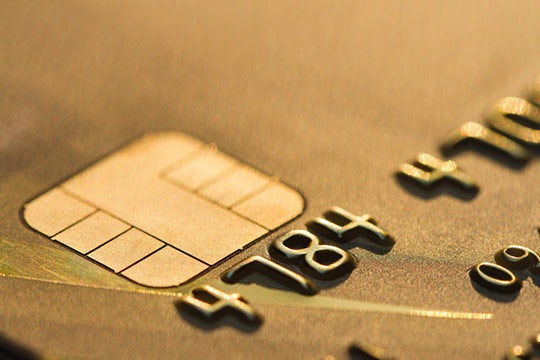
Even though the October 1st deadline has come and gone, the majority of retailers are still lacking the new chip credit card readers that were to have been implemented at the beginning of this month. But that may not be as big an issue as expected according to the NYSE Post - as more than half of all consumers have yet to receive their new cards.
The switch from old-school magnetic-strip credit cards to the new EMV chip cards is expected to take several years, although one of the biggest changes is already in place. Retailers who have yet to upgrade their systems may become liable for any fraudulent activity related to transactions at their shops.
Prior to the switch, liability would be placed on the banks issuing the cards. But now retailers may be forced to foot the bill for fraud if they don’t implement new readers that accept the new chip cards.
How the Chip Cards Work
Instead of swiping the magnetic strip on the back of your card, EMV chip cards require you to insert the card into a slot while the transaction is taking place. The chip card remains in the slot until the transaction is complete, at which time it can be safely removed without disrupting the transaction.
The new card readers feature both a swiping mechanism and a slot mechanism that allows retailers to accept both the chip and magnetic strip cards. The new cards feature both the EMV chip and a magnetic strip so they can be used in the old machines that only contain a swiping mechanism.
Voluntary Switch
New card readers can cost anywhere from a few hundred to $1,000 each, and the decision for retailers to switch is voluntary. Not making the switch, however, can work against the retailers on several levels. In addition to potentially being held liable for fraudulent transactions, retailers who refuse to invest in new card readers may be sending a message to their customers that their security is not of utmost importance.
Entrepreneur reports consumers will eventually come to expect shops to have the technology to use the chip cards, which have reduced fraud throughout Europe and Canada by up to 80 percent. One more benefit of the new card readers is their ability to not only accept chip cards but to also accept payments using NFC-based mobile payments, like Google Wallet.
The switch can show customers the retailer is open to new technologies customers may be using to make their shopping experience more convenient and secure.
Beat fraud in your bookkeeping with Chrome River’s travel and expense report software.
Search
Subscribe
Latest Posts
Posts by Category
Our choice of Chrome River EXPENSE was made in part due to the very user-friendly interface, easy configurability, and the clear commitment to impactful customer service – all aspects in which Chrome River was the clear winner. While Chrome River is not as large as some of the other vendors we considered, we found that to be a benefit and our due diligence showed that it could support us as well as any large players in the space, along with a personalized level of customer care.
We are excited to be able to enforce much more stringent compliance to our expense guidelines and significantly enhance our expense reporting and analytics. By automating these processes, we will be able to free up AP time formerly spent on manual administrative tasks, and enhance the role by being much more strategic.
